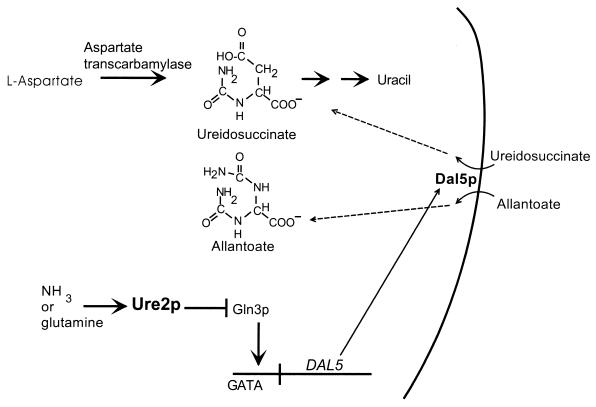FIG. 3.
How ureidosuccinate uptake is controlled by the nitrogen source. Yeast cells growing on a rich source of nitrogen (such as ammonia or glutamine) repress the expression of transporters and metabolic enzymes needed for utilization of poor nitrogen sources. This is called nitrogen catabolite repression (19, 66). Ureidosuccinate (USA) is the product of aspartate transcarbamylase (ura2), the first step in uracil biosynthesis. The chance chemical resemblance of USA to the poor nitrogen source allantoate results in the ability of the allantoate transporter, Dal5p, to import USA. The presence of a rich nitrogen source, such as ammonia, is transmitted to Ure2p, which then blocks the action of the positive transcription factor, Gln3p. Thus, ammonia represses USA uptake, preventing ura2 cells from using USA in place of uracil. Modified from reference 105 with permission of the publisher.

